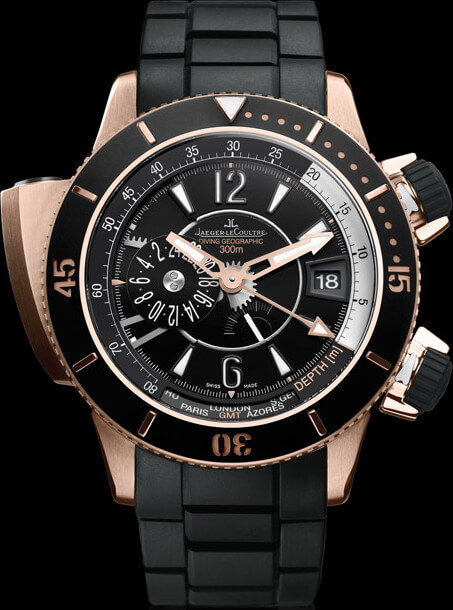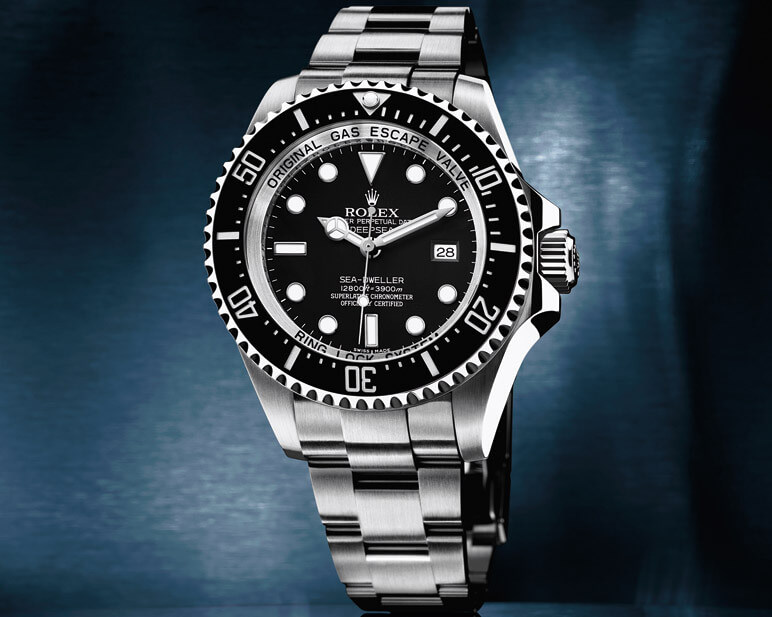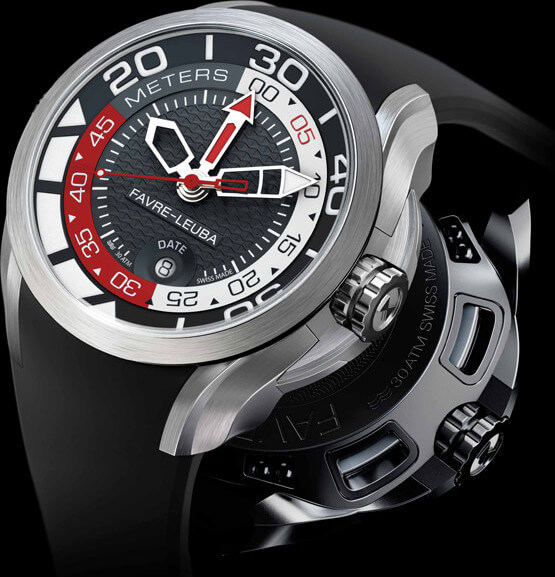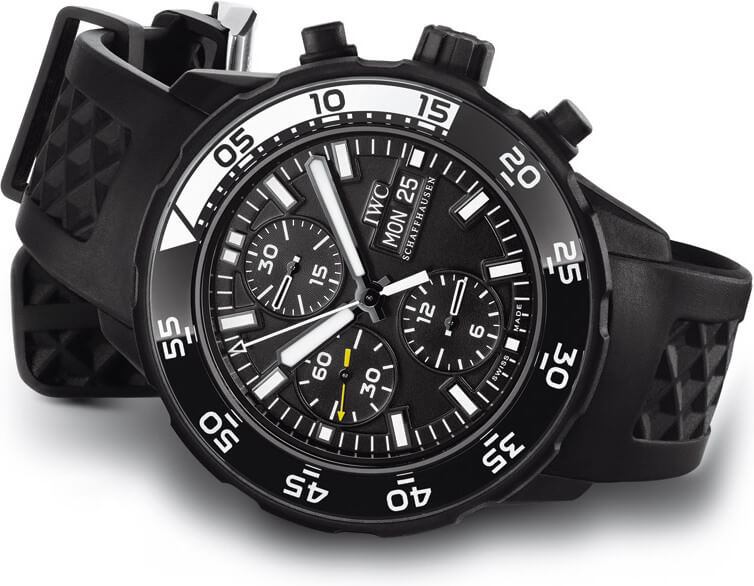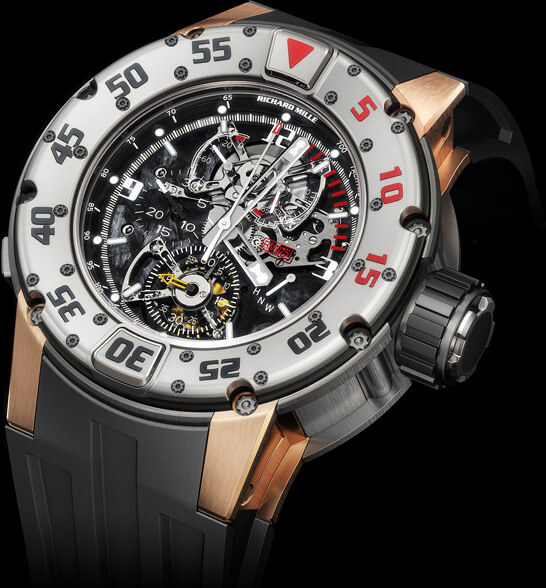How often does a mechanical diving watch get to do what it was designed for? Knowing that the most advanced models are built to explore the depths of the Mariana Trench, but more often than not indulge in nothing more than a little light snorkelling or such high-risk activities as washing dishes or a bracing shower, one can legitimately wonder. Particularly as no deep-sea enthusiast worth their salt ventures onto the ocean floor without a custom-designed dive computer strapped to their wrist. At best, they will wear a diving watch as a back-up.
What, then, is the point of all these notched bezels, helium escape valves, depth gauges, fluorescent markings, alarms and decompression stop indicators if the most these watches have to brave is the formidable pressure of your bathwater? The answer is short and to the point: diving watches are an opportunity for watchmakers to demonstrate their expertise and mastery of mechanical timepieces. And these watches are taking on a more and more extravagant allure as manufactures vie to seduce an audience won over to their sporting design with unbridled feats of technology.
An "old, old story"
To qualify as a diving watch, these models must comply with NIHS 91-11 (ISO 6425) standard. This stipulates basic criteria including luminosity, magnetic and shock resistance and the sturdiness of the strap. In addition to having a unidirectional rotating bezel for calculating dive times, a robust crystal and fluorescent markings, diving watches must withstand immersion in water to a depth of at least 100 metres (10 bar/atm or 10 kg/cm2) for free-diving. Nothing that will impress the many watch firms which decades ago forged a reputation in underwater exploration, with models that now rank as icons. Think Rolex (Oyster 1926; Submariner 1953; Sea-Dweller 1971), Panerai (Luminor 1950), Blancpain (Fifty Fathoms 1953), Breitling (Superocean 1957), Jaeger-LeCoultre (Memovox Deep Sea 1959; Polaris 1963), Girard-Perregaux (Sea Hawk Deep Diver 1965), IWC (Aquatimer 1967), Omega (PloProf 1971) and Tag Heuer (Aquaracer, 1985).
For watchmakers, the only way is up, or rather down, to more extreme conditions and unfathomed depths. Last year, Rolex unveiled its Oyster Perpetual Sea-Dweller Deepsea whose redesigned case architecture takes it to a colossal depth of 3,900 metres. This year it’s Omega’s turn to adorn divers’ wrists with a new version of its legendary Ploprof (short for plongeur professionnel or professional diver). It brings guaranteed water-resistance to 1,200 metres and a bezel that can be locked with a pusher for maximum security. The Ploprof, with its resolutely vintage style, just beats the 1,000 metres’ descent of the Alpina Extreme Divers, launched a few months ago, and the Oris ProDiver Chronograph, unveiled at this year’s Baselworld. Needless to say, all these watches are equipped with a helium escape valve that prevents them from popping open like oysters during decompression stops.
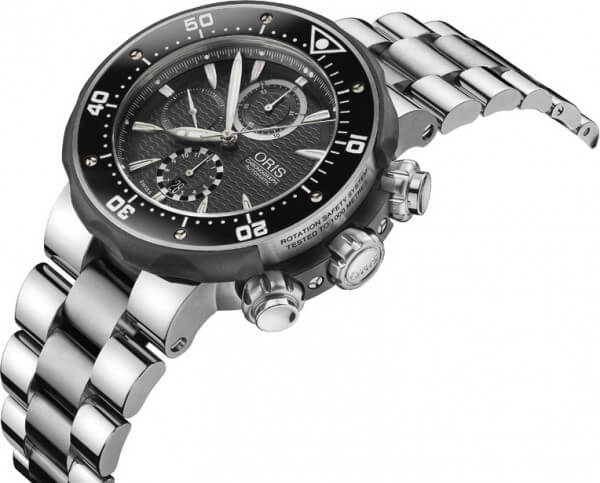
Gauging the depths
The latest application to gain currency among makers of mechanical diving watches is the depth gauge. This is a vital feature for divers, who must respect decompression stops when resurfacing. After experimenting with this kind of system forty years ago, Favre-Leuba has brought it up to speed in its Bathy V2. Water enters the double case back through four openings on the side, where it comes into contact with a beryllium copper membrane. The pressure causes this membrane to contract just a few tenths of a millimetre and, through a complex mechanism, this contraction moves the depth gauge hand. Favre-Leuba promises less than 0.18% deviation at 45 metres’ depth.
Jaeger-LeCoultre also made a splash, so to speak, when it launched its Master Compressor Diving collection two years ago. The Geographic model features a patented mechanical depth gauge housed in the side of the case that measures depths down to 80 metres. IWC’s solution, incorporated into its Aquatimer Deep Two, is intended as a vital back-up should the dive computer fail. It features a semi-circular depth indicator on the left side of the dial. Two hand tips, one blue and one red, indicate actual dive depth and maximum depth. The pressure measurement system is contained inside a second crown, with a cover, also on the left of the case. Water is allowed to enter via micro-perforations in the crown cover and exerts pressure on a mechanically-guided elastic membrane to force a pin into the case. This movement, which is totally independent of the calibre, triggers a lever mechanism which, via a gear train, moves the two hands. Sunday divers and swimming-pool snorkellers rest assured: your safety is in watchmakers’ good hands.
